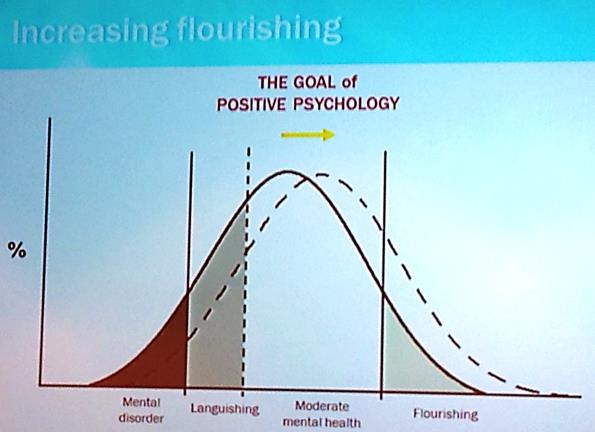 While psychology for the first hundred years of its existence as an academic discipline has very much focused on the negative spectrum of human emotions (fear, guilt, anger etc.), positive psychology looks mostly to the favorable end of that range. On the very far side of the positive sphere lies an emotion which hasn´t really gotten a lot of attention – until one of our MAPP lecturers, Jonathan Haidt, came along. This is emotion is awe. You can see what awe looks like on the face of the Little Guru. It´s a picture I took while he was watching his first display of fireworks ever. You can sense the unique blend of joy, fascination – and fear.
While psychology for the first hundred years of its existence as an academic discipline has very much focused on the negative spectrum of human emotions (fear, guilt, anger etc.), positive psychology looks mostly to the favorable end of that range. On the very far side of the positive sphere lies an emotion which hasn´t really gotten a lot of attention – until one of our MAPP lecturers, Jonathan Haidt, came along. This is emotion is awe. You can see what awe looks like on the face of the Little Guru. It´s a picture I took while he was watching his first display of fireworks ever. You can sense the unique blend of joy, fascination – and fear.
The element of fear marks the crucial difference compared to my wife´s facial expression: she´s seen a lot of fireworks in her life, so she´s just delighted; the angst is missing. Here´s what Haidt has to say on awe in an academic paper on that subject:
Two appraisals are present in all clear cases of awe: perceived vastness and a need for accommodation, defined as an inability to assimilate an experience into current mental structures.
Furthermore: “Awe is felt about diverse events and objects, from waterfalls to childbirth to scenes of devastation. Awe is central to the experience of religion, politics, nature, and art. Fleeting and rare, experiences of awe can change the course of a life in profound and permanent ways”. In addition, Haidt lists five appraisals that account for the “hedonic tone” of the awe experience:
-
threat
-
beauty
-
exceptional ability
-
virtue
-
supernatural
So obviously we can experience awe e.g., via beholding forces of nature, a beautiful piece of art, Roger Federer playing tennis, by experiences such as might have happened to Paul (a.k.a. Saul), and also by witnessing acts of great virtue – as in this video of Team Hoyt (get a Kleenex first if you´ve never seen this before…).
If you´d like to learn more: Jonathan was featured on Oprah a while ago – and he also gave a TED talk touching these issues by the name of “Religion, evolution, and the ecstasy of self-transcendence”:








